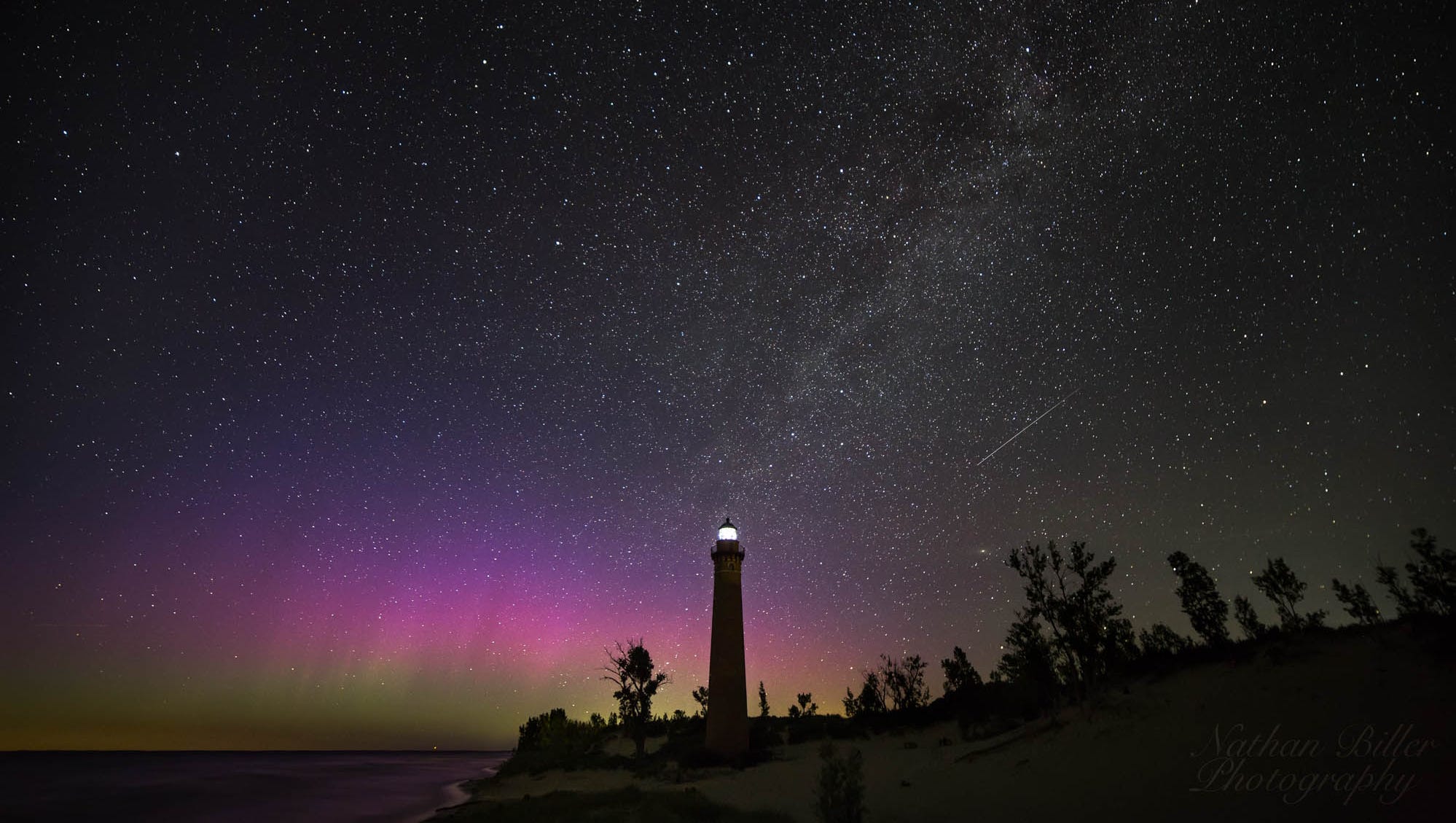

In general, you are more likely to see an aurora if you are at a higher latitude, i.e. Wondering where can you see the Northern Lights in Michigan tonight? The sunlit side of Earth is indicated by the lighter blue of the ocean and the lighter color of the continents.Īlso grab their Northern Lights 3 Day Forecast. The green ovals turn red when the aurora is forecasted to be more intense. The brightness and location of the aurora is typically shown as a green oval centered on Earth’s magnetic pole. The two maps on the northern lights map show the North and South poles of Earth respectively.

You can check this to see the up to date Northern Lights Michigan forecast and your chance of seeing the northern lights tonight. It provides a 30 to 90 minute forecast of the location and intensity of the aurora. This is a short-term forecast of the location and intensity of the aurora. We use it to increase our chances of seeing the northern lights on any given night. It's kind of a northern lights tracker tool and a great resource to determine your probability of seeing the Aurora borealis northern The 30 minute northern lights forecast page shows when residents in Michigan can see the lights. The Ovation Aurora Forecast tool is part of the Space Weather Prediction Center. *Don't forget to click on the Northern Hemisphere "PLAY" Button on the lower left corner for animation once you get there!*Ĭlick the button to be taken to NOAA's Forecasting Tool to see if you have a chance of viewing the northern lights in Michigan tonight. The aurora appears under an oval shaped region between the north and south latitudes of about 60 and 75 degrees.Īt these polar latitudes, the aurora can be observed more than half of the nights of a given year." These diffuse patches often blink on and off repeatedly for hours, then they disappear as the sun rises in the east.

At some point, the arcs may expand to fill the sky, moving very quickly and bright. Late in the evening, near midnight, the arcs often begin to twist and sway, just as if a wind were blowing on the curtains of light.The accelerated electrons follow the magnetic field of Earth down to the Polar Regions where they collide with oxygen and nitrogen atoms and molecules in Earth’s upper atmosphere. The electrons are energized through acceleration processes in the downwind tail (night side) of the magnetosphere and at lower altitudes along auroral field lines. They say, "the Aurora Borealis (Northern Lights) are the result of electrons colliding with Earth’s upper atmosphere. Since I'm not a scientist, let's refer to the Space Weather Prediction Center for more information. ~William Shakespeare First - What are the Northern Nights (Aurora Borealis)?Īurora Borealis (“Northern Lights”) are brilliantly colorful night-time lights that are located above theĮarth’s magnetic poles in the northern and southern hemispheres. The data below shows the K-index for the past week, as measured from Leirvogur Magnetic Observatory."The earth has music for those who listen"

Always take a Kp-index forecast with a pinch of salt. It nevertheless provides a good idea of what to expect. It’s important to note that the Kp-index does not definitively predict the strength of the Northern Lights. Most often caused by powerful coronal mass ejections. Kp 9 – Intense storm – Aurorae seen around 40° latitude.Kp 8 – Severe storm – Bright, dynamic and colourful aurorae.Kp 7 – Strong storm – Bright, dynamic and colourful aurorae.Kp 6 – Moderate storm – Bright, dynamic and colourful aurora display.Kp 5 – Minor storm – Bright, constant and colourful aurora display, red and purple colours appear.Kp 4 – Active – Bright, constant and dynamic northern lights visible.Kp 3 – Unsettled – Bright auroras visible at zenith.Kp 2 – Quiet – Auroras readily visible and become brighter and more dynamic.Kp 1 – Quiet – Aurora oval over Iceland, faint and quiet aurorae visible to the unaided eye low in the northern sky.Faint aurorae visible in photographs, low in the northern sky Kp 0 – Quiet – Aurora oval mostly to the north of Iceland.The following information – from the book Your Guide to the Northern lights and night sky above Iceland (published in early 2019)– describes how different Kp-indices look like as seen from Iceland: The faster the solar wind blows, the greater the turbulence. The index ranges from 0, for low activity, to 9, which means that an intense geomagnetic storm is under way. The Kp-index describes the disturbance of the Earth’s magnetic field caused by the solar wind.


 0 kommentar(er)
0 kommentar(er)
